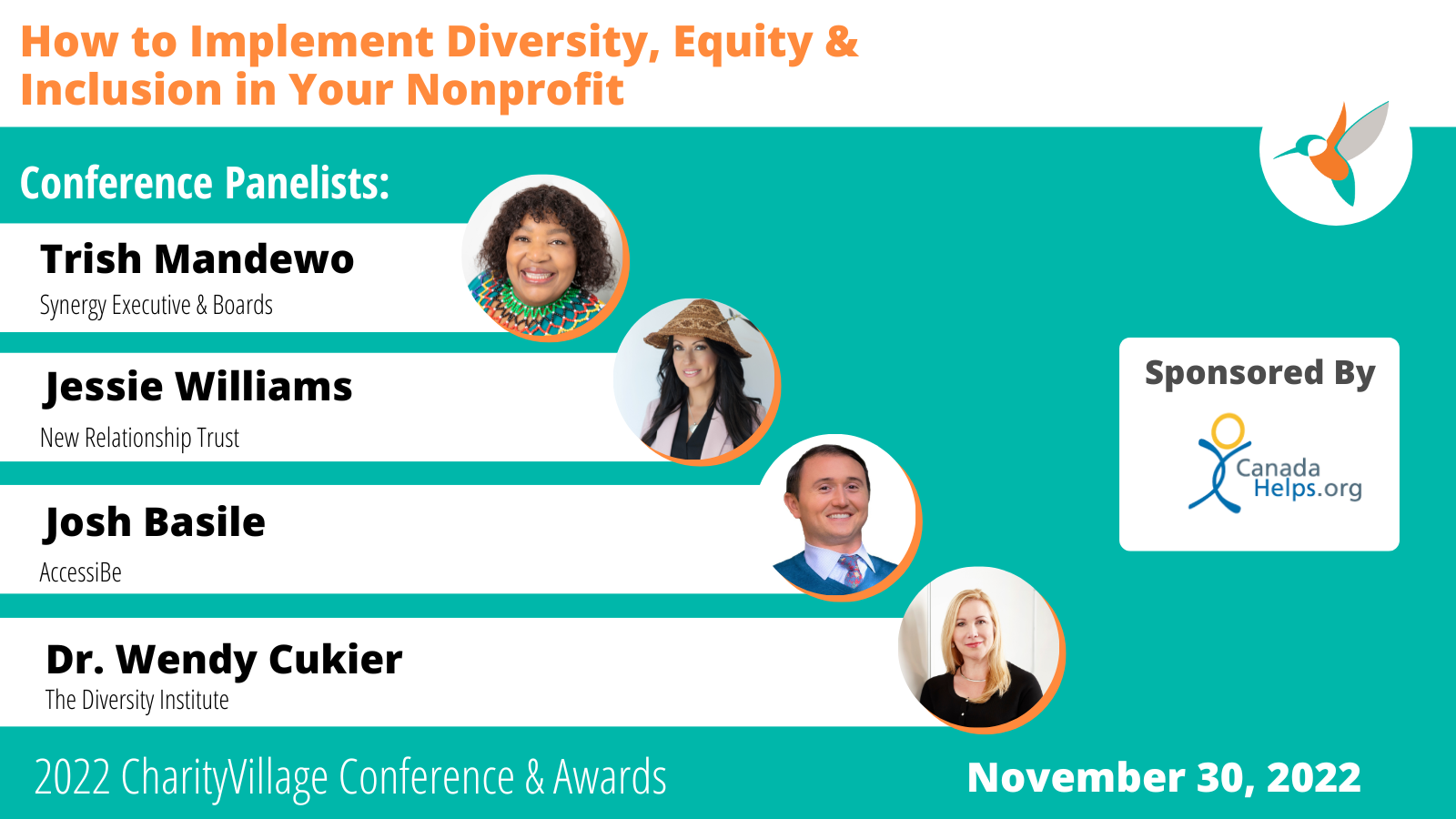How To Make Nonprofits More Diverse and Inclusive

Many non-profit and charitable organizations say that they want to do a better job at diversity, equity and inclusion (DEI) but struggle with knowing what to do and where to start, said Dr. Wendy Cukier, founder and academic director of the Diversity Institute.
Dr. Cukier spoke during a panel discussion at the CharityVillage Annual Conference on November 30 that narrowed in on practical resources and strategies to close the gap between intention and action across the non-profit sector.
The business case for diversity is clear, and the non-profit and charitable sectors stand to benefit greatly by advancing equity, diversity and inclusion specifically in senior leadership positions, Dr. Cukier said.
Research published in DiversityLeads found that women comprised only 38% of board directors in the largest charities and foundations headquartered in the GTA. Racialized people were more underrepresented, holding 17% of leadership roles in the voluntary sector.
Canada’s 50 – 30 Challenge (external link) helps non-profit and charitable organizations to further their DEI efforts, Dr. Cukier said. The Challenge calls on organizations to aspire to gender parity (50%) and more representation of equity-deserving groups (30%) in senior leadership positions.
As an ecosystem partner in the 50 – 30 Challenge, the Diversity Institute and other partners are developing tools and resources to support organizations that have taken the pledge. Among these are the What Works Toolkit (external link) , the Diversity Assessment Tool (external link) , the Micropedia of Microaggressions (external link) , more than 500 best practices, and customized training programs.
The biggest barrier many organizations encounter is the lack of an explicit DEI strategy, Dr. Cukier said. Statistics Canada research (external link) shows that non-profit and charitable organizations that have a written DEI policy for their boards of directors are more likely to have more board members from diverse backgrounds—yet only 30% of such organizations do.
The most successful strategies incorporate specific and measurable goals, Dr. Cukier said, as well as timelines and accountability frameworks. It can also be useful to examine the experiences and success stories of other non-profit and charitable organizations. The Diversity Institute is working with CharityVillage on e-learning courses that will be offered through the CharityVillage Learning Management System that will delve deeper into these points to help boards become more diverse and inclusive.
The panel discussion also featured Josh Basile, disability rights advocate, lawyer, philanthropist, and mentor with accessiBe; Trish Mandewo, founder and CEO of Synergy on Boards, and Jessie Williams, director of business development and communications at New Relationship Trust. Panelists explored the inclusion of people with disabilities in the workplace, Indigenous ways of being and doing, tokenization and intersectionality.
Learn More
Find out how your organization can join The 50 – 30 Challenge (external link) and see how the What Works Toolkit (external link) can help your workplace.
To stay apprised of the latest research, news and programming from the Diversity Institute, subscribe to our newsletter (external link) and follow us on Twitter (external link) and LinkedIn (external link) .